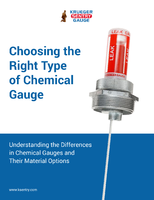Oxygen Transmission Performance for Contact Lenses
It's well-known that the oxygen transmission performance of contact lenses would directly influence the feelings and experiences of the consumers, and the sales volume would be affected correspondingly. Therefore, the test for oxygen permeation performance of contact lens has become a main concern of the manufacturers.
Owing to the importance of oxygen transmission performance of contact lenses, ISO, International Standard Organization, has formulated two relevant testing standards as follows:Â ISO 9913-1, Optics and optical instruments—Contact lenses—Part 1: Determination of oxygen permeability and transmissibility with the FATT method; and ISO 9913-2, Optics and optical instruments—Contact lenses—Part 2: Determination of oxygen permeability and transmissibility by the coulometric method. The testing principle and instrument of ISO 9913-2 are similar to those of coulometric method applied in oxygen transmission rate tests for flexible packaging materials.
Testing principle
Place the sample to be tested into the testing chamber, and the chamber would be separated into two sections: upper chamber and lower chamber. Then, testing gas with a certain oxygen concentration is purged into the upper chamber. Carrier gas flow, that is, nitrogen gas flow, purges into the coulometric sensor through the lower chamber. Though the pressures of the upper chamber and the lower chamber are the same, the pressures of oxygen differ in them. Thus, oxygen would, with the help of concentration difference, permeate through the sample and into the carrier gas side. Then, oxygen would be taken to the coulometric sensor. The sensor would precisely measure the oxygen quantity in the carrier gas flow (that is, nitrogen gas flow), and calculate the oxygen transmission rate (OTR).
It can be concluded, from the above-mentioned principle, that oxygen transmission performance tests for contact lenses and flexible packaging materials have the following steps in common: first, system zero is achieved by purging. Second, oxygen gas flow is purged into the upper chamber. Third, the sensor output is stable (to determine whether transmission equilibrium has been realized). Fourth, testing results can be obtained.
Before testing, instruments should be calibrated with reference films, so as to confirm the correction factors. Those factors would be used in formal tests. It’s stated clearly in ISO 9913-2 that the sample for calibration is SRM 1470, which coincides with the reference film stipulated in ASTM D 3985, a standard for film testing.
However, there are differences in the tests for contact lenses and flexible packaging materials. First, the clamping structures are different. The shapes and sizes of the sample are quite different. Second, testing environments are different. The standard temperature for film oxygen transmission testing is 23°, and that for contact lens is 35°, so as to imitate actual temperature in usage. Meanwhile, temperature change would influence the oxygen transmission testing results remarkably, and the stability of testing temperature has become very important.
Labthink International Inc, headquartered in Greater Boston, Massachusetts, is dedicated to providing integrated professional quality control solutions for contact lenses and flexible packaging manufacturer
Based on our self-developed online product demonstration platform, we exhibit testing instruments through videos, pictures and documents that can provide customers with abundant information, choices and time.
Contact Details:
200 River's Edge Drive
Medford, MA 02155Â Â Â
Tel: +1-617-830-2190Â Â Â Â Â Â
Fax: +1-781-219-3638Â Â Â Â Â Â
Email: info@labthinkinternational.com




